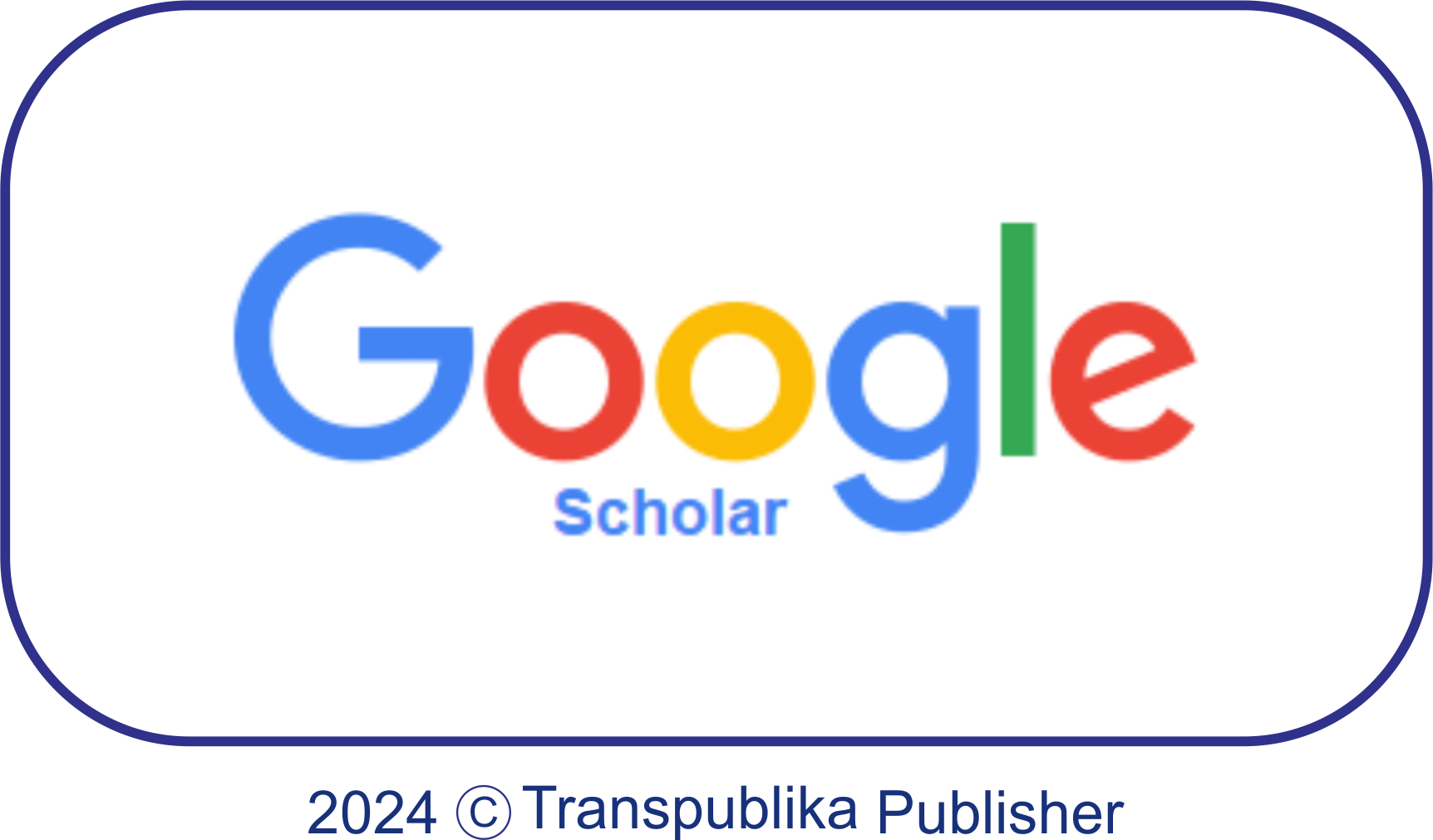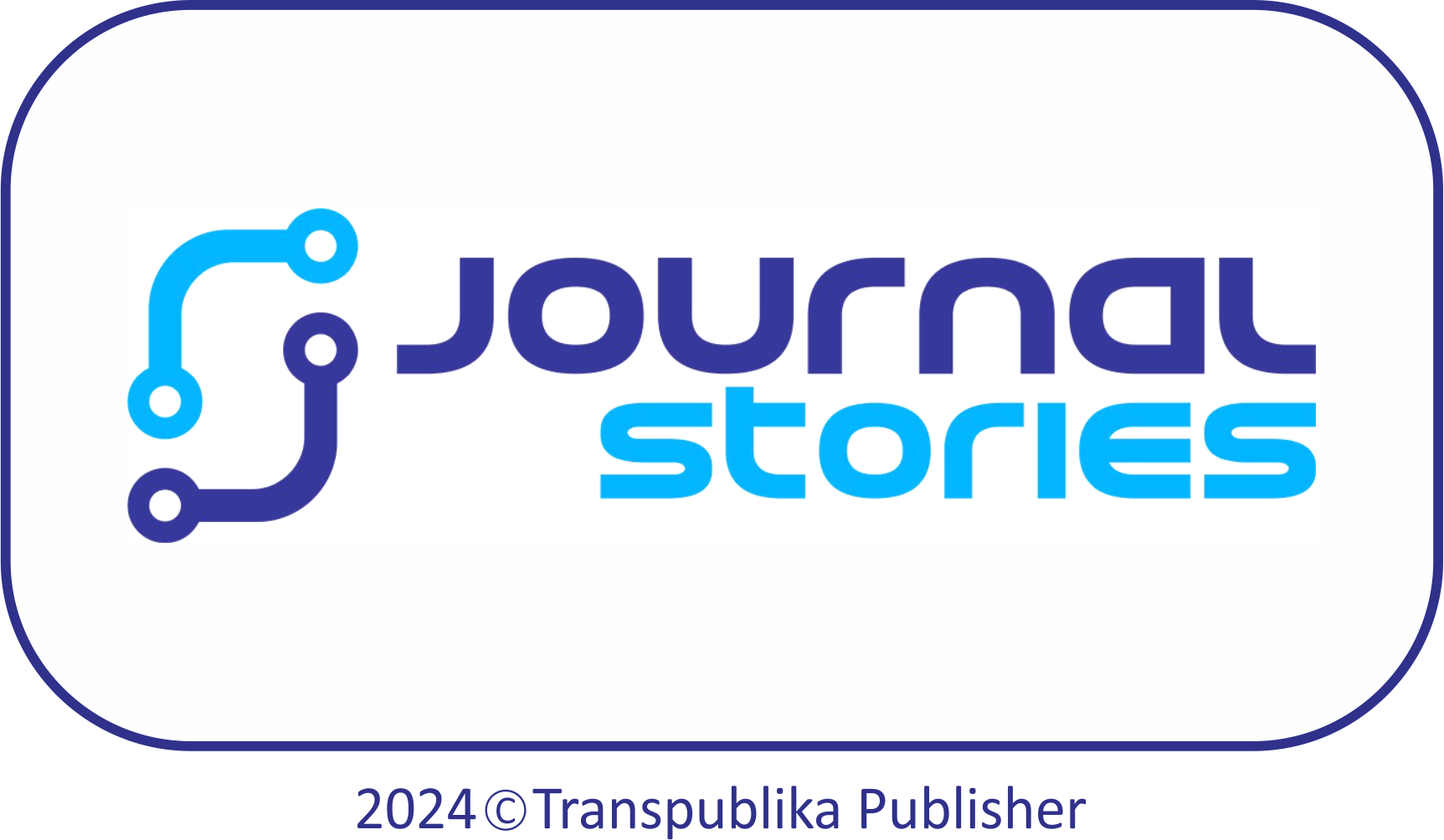Author Guidelines
General Instruction for Authors
All manuscripts must be submitted to the JSCS Editorial Office via Online Submission, where the author registers as an Author and/or is offered as a Reviewer online. If the author has problems with online submissions, please contact the Editorial Office at the following email: transpublika@gmail.com or contact our Support Contact via WhatsApp
Articles that must contain research results and study results that raise actual and scientific ideas in the fields of Accounting, Economy, Business, Finance and Management. Articles submitted for publication must be articles that have never been published in other scientific Journal. Articles are written English by using good and correct written language rules.
Preparation of manuscripts
Authors should carefully prepare their manuscripts in accordance with the following instructions: (1) All manuscripts should be prepared according to the Publication Manual of the American Psychological Association 7th ed. (American Psychological Association [APA], 2010); (2) Manuscripts should be as concise as possible, yet sufficiently detailed to permit adequate communication and critical review; (3) Consult the APA Publication Manual for specific guidelines regarding the format of the manuscript, abstract, citations and references, tables and figures, and other matters of editorial style, and; (4) Tables and figures should be used only when essential.
Submit the manuscript
Before all of you submit the manuscript, please read carefully and following the information: (1) The manuscript was the result of your own works (original – not plagiarism) and never been published in another journal; (2) The article written in Bahasa or English. Abstract and Keywords clear written in English; (3) Manuscript file must be digital. We suggest for use software Microsoft Office (2010 or above) with extension document (.rtf, .doc, or .docx). -- hard copy submissions are not accepted, and; (4) Document format style: Manuscript type on A4 Margin Left: 2,54 cm, Top: 2.94 cm, Right: 2,54 cm, Bottom: 2.54 cm, header 0,75cm and footer 1,02 with different odd and event ; one column. Operating system Windows 10, Windows 8.1, Windows 8, Windows 7 Service Pack 1, Windows Server 2016, Windows Server 2012 R2, Windows Server 2012, or Windows Server 2008 R2; for body text use one column; single line spacing -- before = 0 and after = 6; black color font, and; use only one space after each word periods. For specific information about technically information about the manuscript content, see the Submission Preparation Checklist and use the JSCS Template
The structure of manuscripts
• Research Article (Featured Research/Practitioner Research): (a) Title Page, (b) Authors' Names, Affiliations, and contact, (c) Abstract, (d) Keyword(s), (e) Recommended Cite, (f) Introduction, (g) Method, (h) Results and Discussion, (i) Conclusions, (j) Acknowledgements, and (k) References.
• Article/extensive book reviews/reports review/literature review/conceptual paper: (a) Title Page, (b) Authors' Names, Affiliations, and contact, (c) Abstract, (d) Keyword(s), (e) Recommended Cite, (f) Introduction, (g) Discussion, (h) Conclusions, (i) Acknowledgements, and (j) References.
Title
A title should be the fewest possible words that accurately describe the content of the paper (Centre, Bold, 14pt)
Author(s) and Affiliation(s)
Author Name 1 , Author Name 2 , Author Name 3 (11 pt)
1 Affiliation1 (11 pt), 2 Affiliation 2 (11 pt)
Abstract
A well-prepared abstract enables the reader to identify the basic content of a document quickly and accurately, to determine its relevance to their interests, and thus to decide whether to read the document in its entirety. The Abstract should be informative and completely self-explanatory, provide a clear statement of the problem, the proposed approach or solution, and point out major findings and conclusions. The Abstract should be 150 to 250 words in length. The abstract should be written in the past tense. Standard nomenclature should be used and abbreviations should be avoided. No literature should be cited. The keyword list provides the opportunity to add keywords, used by the indexing and abstracting services, in addition to those already present in the title. Judicious use of keywords may increase the ease with which interested parties can locate our article (11 pt).
Keywords:Written in English. Choosing appropriate keywords is important, because these are used for indexing purposes. Please select a maximum of 5 words to enable your manuscript to be more easily identified and cited.
Introduction
The introduction is a little different from the short and concise abstract. The reader needs to know the background to your research and, most importantly, why your research is important in this context. What critical question does your research address? Why should the reader be interested?
The purpose of the Introduction is to stimulate the reader’s interest and to provide pertinent background information necessary to understand the rest of the paper. You must summarize the problem to be addressed, give background on the subject, discuss previous research on the topic, and explain exactly what the paper will address, why, and how. A good thing to avoid is making your introduction into a mini review. There is a huge amount of literature out there, but as a scientist you should be able to pick out the things that are most relevant to your work and explain why. This shows an editor/reviewer/reader that you really understand your area of research and that you can get straight to the most important issues.
Keep your Introduction to be very concise, well structured, and inclusive of all the information needed to follow the development of your findings. Do not over-burden the reader by making the introduction too long. Get to the key parts other paper sooner rather than later.
Tips:
- Begin the Introduction by providing a concise background account of the problem studied.
- State the objective of the investigation. Your research objective is the most important part of the introduction.
- Establish the significance of your work: Why was there a need to conduct the study?
- Introduce the reader to the pertinent literature. Do not give a full history of the topic. Only quote previous work having direct bearing on the present problem.
- Clearly state your hypothesis, the variables investigated, and concisely summarize the methods used.
- Define any abbreviations or specialized/regional terms.
- Provide a concise discussion of the results and findings of other studies so the reader understands the big picture.
- Describe some of the major findings presented in your manuscript and explain how they contribute to the larger field of research.
- State the principal conclusions derived from your results.
- Identify any questions left unanswered and any new questions generated by your study.
Be concise and aware of who will be reading your manuscript and make sure the Introduction is directed to that audience. Move from general to specific; from the problem in the real world to the literature to your research. Last, please avoid to make a sub section in Introduction.
Example of novelty statement or the gap analysis statement in the end of Introduction section (after state of the art of previous research survey):
“........ (short summary of background)....... A few researchers focused on ....... There have been limited studies concerned on ........ Therefore, this research intends to ................. The objectives of this research are .........”.
Method
In the Method section, you explain clearly how you conducted your research order to: (1) enable readers to evaluate the work performed and (2) permit others to replicate your research. You must describe exactly what you did: what and how experiments were run, what, how much, how often, where, when, and why equipment and materials were used. The main consideration is to ensure that enough detail is provided to verify your findings and to enable the replication of the research. You should maintain a balance between brevity (you cannot describe every technical issue) and completeness (you need to give adequate detail so that readers know what happened).
Tips:
- Define the population and the methods of sampling;
- Describe the instrumentation;
- Describe the procedures and if relevant, the time frame;
- Describe the analysis plan;
- Describe any approaches to ensure validity and reliability;
- State any assumptions;
- Describe statistical tests and the comparisons made; ordinary statistical methods should be used without comment; advanced or unusual methods may require a literature citation, and;
- Describe the scope and/or limitations of the methodology you used.
In the social and behavioral sciences, it is important to always provide sufficient information to allow other researchers to adopt or replicate your methodology. This information is particularly important when a new method has been developed or an innovative use of an existing method is utilized. Last, please avoid to make a sub section in Method.
Results and Discussions
The purpose of the Results and Discussion is to state your findings and make a interpretations and/or opinions, explain the implications of your findings, and make suggestions for future research. Its main function is to answer the questions posed in the Introduction, explain how the results support the answers and, how the answers fit in with existing knowledge on the topic. The Discussion is considered the heart of the paper and usually requires several writing attempts.
The discussion will always connect to the introduction by way of the research questions or hypotheses you posed and the literature you reviewed, but it does not simply repeat or rearrange the introduction; the discussion should always explain how your study has moved the reader's understanding of the research problem forward from where you left them at the end of the introduction.
To make your message clear, the discussion should be kept as short as possible while clearly and fully stating, supporting, explaining, and defending your answers and discussing other important and directly relevant issues. Care must be taken to provide commentary and not a reiteration of the results. Side issues should not be included, as these tend to obscure the message.
Tips:
- State the Major Findings of the Study;
- Explain the Meaning of the Findings and Why the Findings Are Important;
- Support the answers with the results. Explain how your results relate to expectations and to the literature, clearly stating why they are acceptable and how they are consistent or fit in with previously published knowledge on the topic;
- Relate the Findings to Those of Similar Studies;
- Consider Alternative Explanations of the Findings;
- State the Clinical Relevance of the Findings;
- Acknowledge the Study’s Limitations, and;
- Make Suggestions for Further Research.
It is easy to inflate the interpretation of the results. Be careful that your interpretation of the results does not go beyond what is supported by the data. The data are the data: nothing more, nothing less. Please avoid and make over interpretation of the results, unwarranted speculation, inflating the importance of the findings, tangential issues or over-emphasize the impact of your research.
The following components should be covered in discussion: How do your results relate to the original question or objectives outlined in the Introduction section (what/how)? Do you provide interpretation scientifically for each of your results or findings presented (why)? Are your results consistent with what other investigators have reported (what else)? Or are there any differences?
Work with Graphic:
Figures and tables are the most effective way to present results. Captions should be able to stand alone, such that the figures and tables are understandable without the need to read the entire manuscript. Besides that, the data represented should be easy to interpret.
Tips:
- The graphic should be simple, but informative;
- The use of color is encouraged;
- The graphic should uphold the standards of a scholarly, professional publication;
- The graphic must be entirely original, unpublished artwork created by one of the co-authors;
- The graphic should not include a photograph, drawing, or caricature of any person, living or deceased;
- Do not include postage stamps or currency from any country, or trademarked items (company logos, images, and products), and;
- Avoid choosing a graphic that already appears within the text of the manuscript.
Last, please avoid to make a sub section in Results and Discussion.
Conclusions
The conclusion is intended to help the reader understand why your research should matter to them after they have finished reading the paper. A conclusion is not merely a summary of the main topics covered or a re-statement of your research problem, but a synthesis of key points.It is important that the conclusion does not leave the questionn unanswered.
Conclusions should answer the objectives of the research. Tells how your work advances the field from the present state of knowledge. Without clear Conclusions, reviewers and readers will find it difficult to judge the work, and whether or not it merits publication in the journal. Do not repeat the Abstract, or just list experimental results. Provide a clear scientific justification for your work, and indicate possible applications and extensions. You should also suggest future experiments and/or point out those that are underway.
Tips:
- State your conclusions clearly and concisely. Be brief and stick to the point;
- Explain why your study is important to the reader. You should instill in the reader a sense of relevance;
- Prove to the reader, and the scientific community, that your findings are worthy of note. This means setting your paper in the context of previous work. The implications of your findings should be discussed within a realistic framework, and;
- Strive for accuracy and originality in your conclusion. If your hypothesis is similar to previous papers, you must establish why your study and your results are original.
For most essays, one well-developed paragraph is sufficient for a conclusion, although in some cases, a two or three paragraph conclusion may be required.The another of important things about this section is (1) do not rewrite the abstract; (2) statements with “investigated” or “studied” are not conclusions; (3) do not introduce new arguments, evidence, new ideas, or information unrelated to the topic; (4)do not include evidence (quotations, statistics, etc.) that should be in the body of the paper.
Acknowledgments (if any)
Acknowledge anyone who has helped you with the study, including: Researchers who supplied materials, reagents, or computer programs; anyone who helped with the writing or English, or offeredcritical comments about the content, or anyone who provided technical help. State why people have been acknowledged and ask their permission. Acknowledge sources of funding, including any grant or reference numbers. Please avoid apologize for doing a poor job of presenting the manuscript. Do not acknowledge one of the authors names.
References
References should follow the style detailed in the APA 7th Publication Manual. Make sure that all references mentioned in the text are listed in the reference section and vice versa and that the spelling of author names and years are consistent. Please to not be used footnote or endnote in any format.
Tips:(Please cross check for)
- Spelling of author names;
- Punctuation;
- Number of authors to include before using “etc.”, and;
- Reference style
We suggest all of you using software ENDNOTE, MENDELEY, ZOTERO, or EASYBIB for easily citation. References should be the most recent and pertinent literature available (about 5-10 years ago). Authors must also carefully follow APA 7th Publication Manual guidelines for nondiscriminatory language regarding gender, sexual orientation, racial and ethnic identity, disabilities, and age. In addition, the terms counseling, counselor, and client are preferred, rather than their many synonyms.
Page limitations
The full length of submission manuscript not more than 8000 words, or maximum 20 pages and minimum 5 pages; including references, table and figure (Appendix--Exclude).
Permission requirements
Lengthy quotations (generally 400 cumulative words or more from one source) require written permission from the copyright holder for reproduction. Previously published tables or figures that are used in their entirety, in part, or adapted also require written permission from the copyright holder for reproduction. It is the author’s responsibility to secure such permission, and a copy of the publisher’s written permission must be provided to the Editor immediately upon acceptance for publication.
Note:
Make sure that the paper is written using the Template.












.png)


.png)
.png)






.png)

